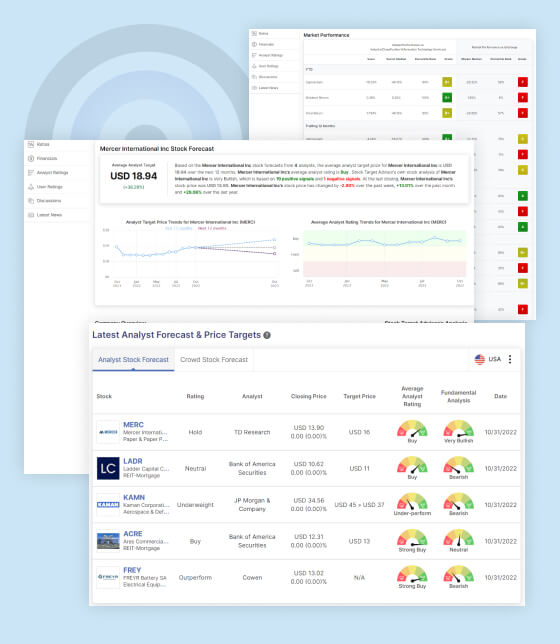Starlink’s Cell Phone Integration
In a significant development for Ukraine, the Tesla CEO, Elon SpaceX’s Starlink service has allowed cell phones to directly connect to its satellite network, which is particularly impactful in regions where traditional communication infrastructure has been damaged or destroyed due to the ongoing conflict with Russia. This enhancement is part of Starlink’s broader effort to support Ukraine’s communication and internet needs during the war.
The Role of Starlink in Ukraine
Starlink, SpaceX’s satellite internet service, has played a critical role in Ukraine since the early days of the war in 2022. Starlink provided Ukraine with internet access when terrestrial networks were damaged, enabling civilians, government officials, and military personnel to maintain communications, access vital information, and conduct operations despite widespread destruction of the infrastructure.
The traditional role of Starlink has been to provide satellite-based broadband internet access, using a network of low Earth orbit (LEO) satellites. However, the recent development of allowing cell phones to use the Starlink network takes this support a step further, particularly in mobile communication.
How It Works
Starlink operates through a constellation of small satellites orbiting the Earth at relatively low altitudes (around 550 km). These satellites provide high-speed internet to user terminals (dish-like devices) that are installed at homes, businesses, and government buildings. In the new arrangement, SpaceX has enabled a direct connection from cell phones to the Starlink satellite network, bypassing the need for ground-based cell towers and base stations.
In practice, this means that a cell phone in Ukraine can send and receive data directly from the Starlink satellites in orbit. This is particularly valuable in rural and contested areas, where mobile network infrastructure may be unreliable or nonexistent due to damage or the strategic targeting of infrastructure by adversaries.
Benefits for Ukraine
- Enhanced Connectivity in Conflict Zones: One of the primary benefits of allowing cell phones to use the Starlink network is the ability to stay connected in areas where cell towers have been targeted or destroyed in the conflict. This has significant implications for both civilians and the military, as they can use mobile devices for emergency communication, information sharing, and coordination in areas with limited access to traditional telecom services.
- Increased Security: Traditional communication networks, especially mobile networks, can be vulnerable to surveillance and disruption. By using satellite connectivity, individuals, especially government officials and military personnel, can communicate in a more secure manner, reducing the risk of interception or jamming by adversaries.
- Strengthening Civilian Access: For everyday Ukrainians, the ability to use cell phones with Starlink enables them to stay connected with their families, access essential services, and continue work or education remotely.
- Support for Military Operations: The Ukrainian military has heavily relied on Starlink to facilitate communication, coordination, and data sharing for operations. The new capability to use cell phones for communication via Starlink ensures that troops can remain connected, even when stationed in isolated or rural areas without access to traditional mobile networks.
Potential Challenges
While the integration of cell phones into the Starlink network provides substantial advantages, there are a few potential challenges and limitations:
- Bandwidth and Capacity: As more users connect to the Starlink network, there may be concerns about bandwidth limitations and network congestion, especially during peak usage times. Starlink’s satellite network is robust, but scaling to accommodate a large number of mobile devices could strain the system in the future.
- Costs: While Starlink is generally considered more affordable than other satellite services, the high costs of providing continuous, satellite-based internet and mobile services could present financial challenges for the Ukrainian government and users who rely on this service for communication.
- Geopolitical Considerations: SpaceX, led by Elon Musk, has at times faced criticism over the potential military use of its technology and the risk of political influence. For example, there were concerns earlier in the war about the control and ownership of the Starlink network and how it could be used or even limited by SpaceX for political reasons.
The impact of Starlink allowing cell phones to connect directly to its satellite network could have wide-ranging effects on the telecommunications industry, particularly for mobile network providers and users. Here’s an in-depth look at the various areas where the impact will be felt:
1. Impact on Traditional Mobile Network Providers
- Disruption of Business Models: Traditional mobile network operators could face significant disruption. Satellite connectivity, especially through a high-coverage provider like Starlink, offers a powerful alternative to the traditional reliance on ground-based infrastructure. For rural, underserved, or disaster-prone areas where building cell towers is expensive or impractical, Starlink’s satellite-based service could render the need for traditional mobile infrastructure less urgent.
- Cost-Efficiency for Providers: Mobile network operators may need to invest more in maintaining and upgrading their existing infrastructure to remain competitive with satellite services. However, in areas with low population density or damaged infrastructure (as seen in Ukraine), it may be more cost-effective for providers to explore partnerships with satellite companies or shift to satellite-based solutions rather than spending heavily on ground network expansion.
- Network Congestion and Shifts in Traffic: If users in certain areas begin using Starlink for their mobile communication, it could relieve congestion on traditional mobile networks, particularly in densely populated or disaster-stricken regions. However, this could also alter traffic patterns and demand forecasting for traditional mobile operators, pushing them to adjust their capacity and service offerings.
2. Impact on Mobile Coverage in Remote or Hard-to-Reach Areas
- Improved Service for Remote Areas: In remote areas where mobile towers are sparse or non-existent, Starlink can offer a reliable service, providing communication capabilities without the need for expensive infrastructure. This is particularly important in areas with difficult geography (e.g., mountains, oceans) or where building mobile towers is infeasible.
- Increased Connectivity in Crisis Zones: In conflict zones like Ukraine, Starlink’s ability to provide communication in the absence of functioning ground-based mobile infrastructure could be crucial. Emergency responders, humanitarian organizations, and even civilians will be able to maintain mobile communications, which would otherwise be impossible with traditional mobile networks.
- Alternative for Disaster-Prone Areas: In disaster-prone areas such as earthquake zones, Starlink could offer a quick recovery solution for communications, bypassing the need to rebuild damaged cell towers. Mobile operators might need to evaluate the long-term cost-effectiveness of maintaining mobile networks in such areas compared to relying on satellite-based solutions.
3. Impact on Consumer Behavior and Expectations
- Consumer Expectations for Seamless Connectivity: As satellite connectivity becomes more integrated into mobile devices, consumers may begin to expect a more ubiquitous, always-on connection, regardless of location. This could change the way people use their mobile devices, with greater reliance on satellite-based services when traditional networks are unavailable or unreliable.
- Increased Awareness and Adoption: If consumers see the benefits of satellite-based connectivity through Starlink in conflict zones or remote areas, they may demand similar services in their own markets, leading to an increased interest in satellite services. If Starlink can demonstrate strong service quality and competitive pricing, other mobile operators might face pressure to adopt similar solutions or offer hybrid models.
- Pricing Shifts in the Mobile Industry: As satellite services become more widespread, it could drive changes in pricing strategies within the mobile industry. Users might begin to compare the cost of using satellite-based services to that of using traditional mobile networks, and mobile operators may need to offer more competitive pricing or expanded services (such as backup satellite options) to retain customers.
4. Regulatory and Market Challenges
- Regulatory Oversight and Spectrum Allocation: The introduction of satellite connectivity into the mobile network landscape could create new regulatory challenges. National governments and regulators may need to address the allocation of spectrum for satellite services and ensure that these services operate harmoniously with traditional mobile networks. There could be concerns over interference, jurisdictional issues, and coordination between satellite providers and existing network operators.
- New Licensing and Roaming Models: As satellite services like Starlink become more mainstream, new business models around licensing and roaming agreements might emerge. For example, traditional mobile network operators might need to negotiate satellite service access or enter partnerships with companies like SpaceX to offer hybrid mobile/satellite plans. This could create new revenue streams or costs for mobile operators.
- Impact on Network Neutrality and Competition: If mobile operators begin to integrate satellite-based services into their offerings, there could be new questions around network neutrality and competition. For instance, the market could become more concentrated, as satellite providers like Starlink offer widespread, seamless coverage while mobile operators shift away from costly ground-based infrastructure. Regulators may need to ensure that such transitions do not disadvantage smaller operators or create monopolistic tendencies in certain markets.
5. Technological and Operational Implications
- Reliability and Speed Considerations: While Starlink promises low-latency, high-speed internet, traditional mobile networks could still outperform satellite systems in some use cases, particularly for users on the move or in areas with dense coverage. Mobile networks will likely remain more suitable for urban environments, where terrestrial towers provide faster and more consistent service. However, as technology improves and Starlink’s infrastructure expands, its services may continue to improve, narrowing this gap.
- Mobile Operators Adapting to Satellite Integration: Mobile operators might be compelled to innovate by integrating satellite services with their existing networks. This could include creating hybrid solutions that switch between terrestrial and satellite networks depending on availability, creating new service offerings like global roaming through satellite or introducing competitive pricing models that reflect the value of satellite connectivity.
- Increased Investment in Satellite Tech: With more mobile networks recognizing the potential of satellite technology, we could see increased investment and innovation in this space. Companies may develop satellite-based systems specifically designed for mobile communications, including smaller, cheaper, and more efficient satellites designed to handle mobile traffic.
6. Long-Term Industry Shifts
- Potential Shift Towards a Dual-Mode System: In the future, a dual-mode system combining mobile and satellite networks could become the norm. For regions where satellite connectivity is available, users could expect to automatically switch between mobile and satellite networks, ensuring uninterrupted communication even in remote or disaster-impacted locations. Mobile operators may become service providers that offer both types of connectivity, positioning themselves as comprehensive solutions for customers’ communication needs.
- Redefining Global Connectivity: Starlink’s impact could redefine global connectivity, especially in underserved regions. By providing universal access to satellite internet, Starlink could expand the scope of mobile services and reshape global communication patterns. It could be especially transformative in rural and developing regions where mobile networks are either absent or inefficient.
Companies & Stocks Impacted
Starlink’s integration with cell phones could have a significant impact on several companies, particularly in the mobile network, satellite communication, and technology industries. Below are the main sectors and companies that could be affected:
1. Mobile Network Operators
- Verizon, AT&T, T-Mobile (U.S.): The major mobile operators, which rely on terrestrial cellular towers and infrastructure for communication services, could be impacted by the satellite-based connectivity that Starlink offers. Starlink’s ability to provide direct satellite connections to cell phones may bypass traditional cellular networks, reducing reliance on these mobile carriers in remote or underserved areas. This could lead to competition and challenges in terms of market share, pricing, and customer loyalty, especially in rural or hard-to-reach locations.
- Vodafone, Deutsche Telekom, Orange (Europe): Similar to U.S. companies, European telecoms might face competition in regions where Starlink can provide direct satellite-to-phone service, particularly where infrastructure investments are costly or inefficient.
2. Satellite Communication Companies
- OneWeb: A competitor to Starlink, OneWeb focuses on building its own satellite constellation for global broadband access. Starlink’s integration with cell phones could create further competition for OneWeb in the satellite internet space, particularly in the areas of mobile satellite service.
- Amazon’s Project Kuiper: Amazon is developing its own satellite network, Project Kuiper, to provide global internet coverage. The success of Starlink in enabling mobile phones to access satellite services could pressure Amazon to accelerate its own satellite deployment and partnerships with mobile companies.
- SES Networks: SES provides satellite communication services worldwide and could see competition from Starlink’s growing network, especially in mobile and rural internet access.
3. Technology Companies (Hardware and Software)
- Apple, Samsung, Google (Android): These smartphone manufacturers may need to adjust their designs and software to accommodate satellite connectivity. For instance, they might need to include new antennas or integrate Starlink’s technology into their phones. Companies could also look at partnerships with Starlink for satellite connectivity on their devices, or they may see a shift in market demand for devices that are compatible with satellite internet.
- Qualcomm: Qualcomm, the semiconductor company that supplies chips to mobile phone manufacturers could be affected by the increased demand for satellite-compatible hardware. Qualcomm might be involved in providing the necessary chips or technology to enable seamless integration between Starlink and cell phones.
- Mobile Operating Systems: Both iOS (Apple) and Android (Google) might need to adapt their operating systems to incorporate Starlink’s satellite connectivity, which could include specific software updates, API support, or features designed to work with satellite communications.
4. Traditional Internet Service Providers (ISPs)
- Comcast, Charter, Cox (U.S.): Traditional internet service providers who depend on fiber optics and cable infrastructure for broadband access might face disruption from Starlink’s satellite internet services. In rural and underserved markets, where ground-based broadband infrastructure is either lacking or expensive to implement, Starlink could serve as an alternative, potentially decreasing demand for traditional ISPs.
- BT Group, Telefónica (Europe): Similarly, large ISPs in Europe may experience pressure in areas where Starlink can offer a more flexible and cost-effective service, potentially reducing subscription growth for traditional broadband services.
5. Telecom Infrastructure Providers
- Ericsson, Nokia, Huawei: These companies supply infrastructure for mobile networks, such as base stations, antennas, and other telecom equipment. With a shift toward satellite connectivity like Starlink, there could be a reduced need for some traditional network infrastructure in specific regions, potentially leading to decreased demand for their equipment in areas where satellite networks provide sufficient coverage.
6. Emergency and Disaster Response Services
- Emergency Communications Providers: Starlink’s mobile phone integration may be a game-changer for emergency services in remote areas. Organizations that rely on terrestrial communication infrastructure for disaster response might find Starlink a useful alternative in situations where traditional networks are down or inaccessible. Companies involved in crisis communication services or those offering satellite phones could see changes in their business models due to Starlink’s lower-cost, accessible alternative.
7. Mobile Virtual Network Operators (MVNOs)
- TracFone, Mint Mobile, Google Fi: These MVNOs, which rely on partnerships with major mobile carriers for network access, could potentially face challenges as Starlink offers its satellite service directly to consumers. MVNOs may need to adapt to the new satellite-enabled mobile services, either by forming partnerships with Starlink or offering competing services in collaboration with other satellite companies.
8. International Mobile Networks in Remote Regions
- Digicel, MTN, Bharti Airtel: In emerging markets where mobile networks cover vast areas with low density (like parts of Africa and Southeast Asia), Starlink’s ability to provide internet directly to mobile devices could disrupt the telecom business. These companies could see reduced demand in remote regions, where traditional infrastructure is expensive to maintain.
Potential Positive Impacts:
- Mobile Carriers and Telecom Providers: Rather than competing, some carriers may choose to collaborate with Starlink to offer satellite backup services, particularly in remote areas where coverage is sparse.
- Global Internet Access Expansion: Starlink’s integration could lead to more affordable mobile access in rural, remote, and underserved areas, benefiting communities that previously had no reliable mobile network or broadband access.
Impact & Outlook
Starlink’s direct mobile phone connectivity offers significant benefits, including improved coverage in remote areas, increased competition for mobile operators, and enhanced resilience in disaster-stricken zones. The impact on traditional mobile networks could be substantial, leading to cost-cutting, rethinking infrastructure investments, and possibly a shift in how consumers and regulators perceive connectivity options. Mobile operators will need to innovate, adapt, and potentially integrate satellite services into their offerings to remain competitive in an increasingly interconnected world.

STA Research (StockTargetAdvisor.com) is a independent Investment Research company that specializes in stock forecasting and analysis with integrated AI, based on our platform stocktargetadvisor.com, EST 2007.






































